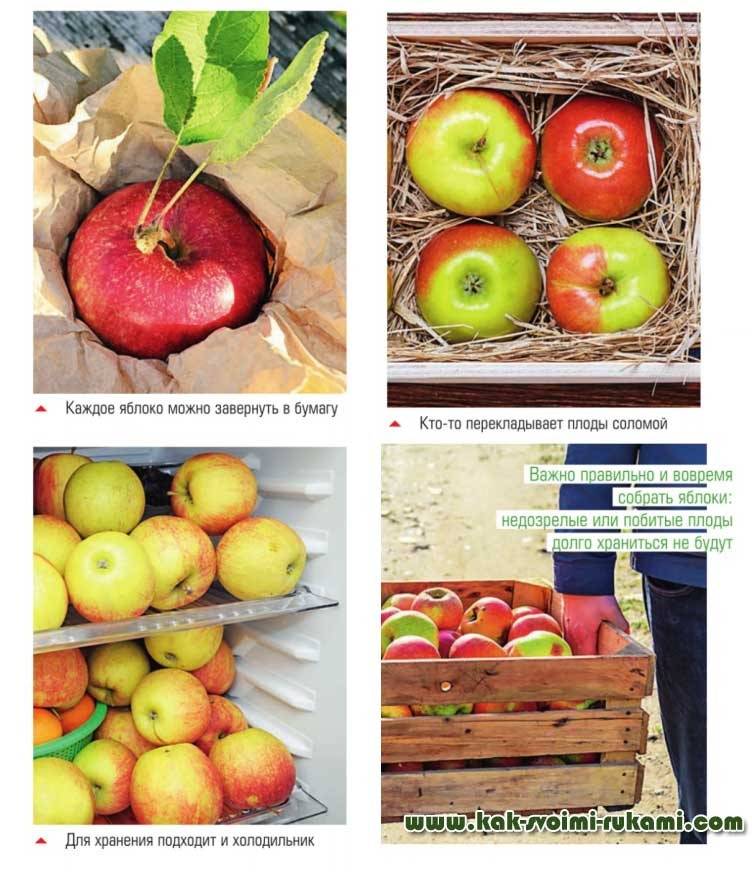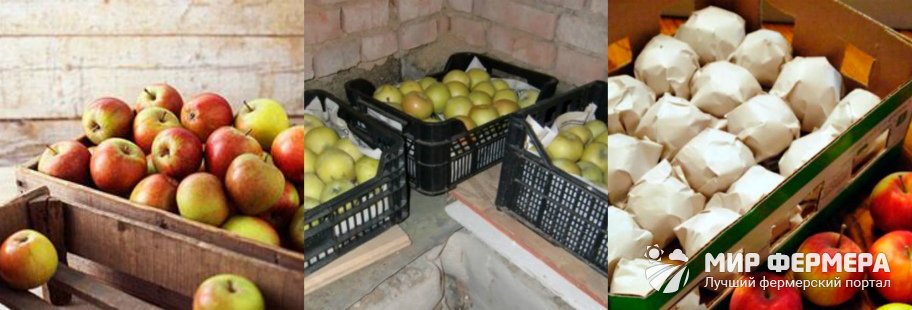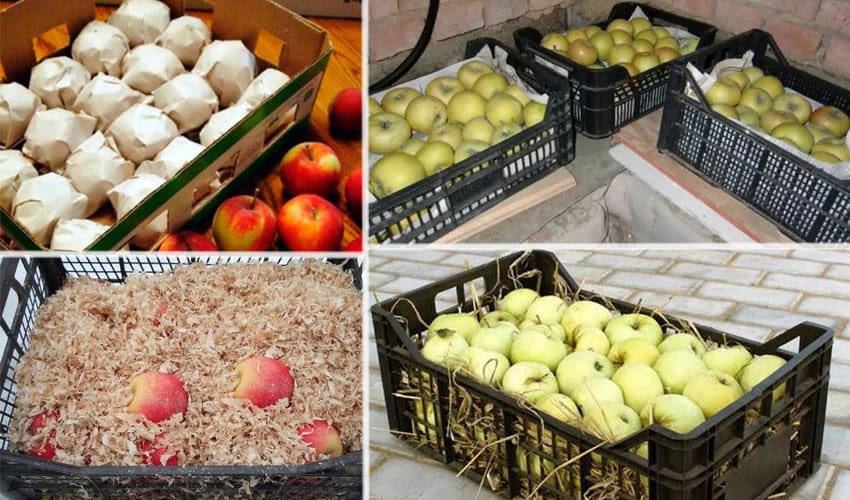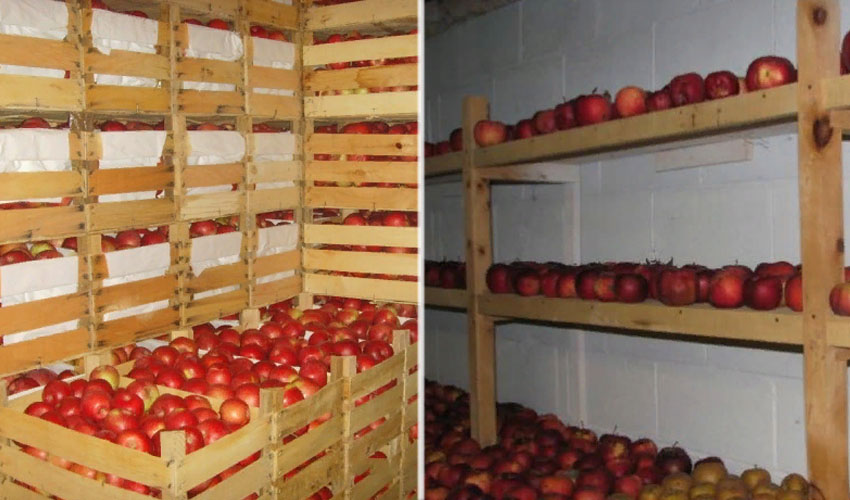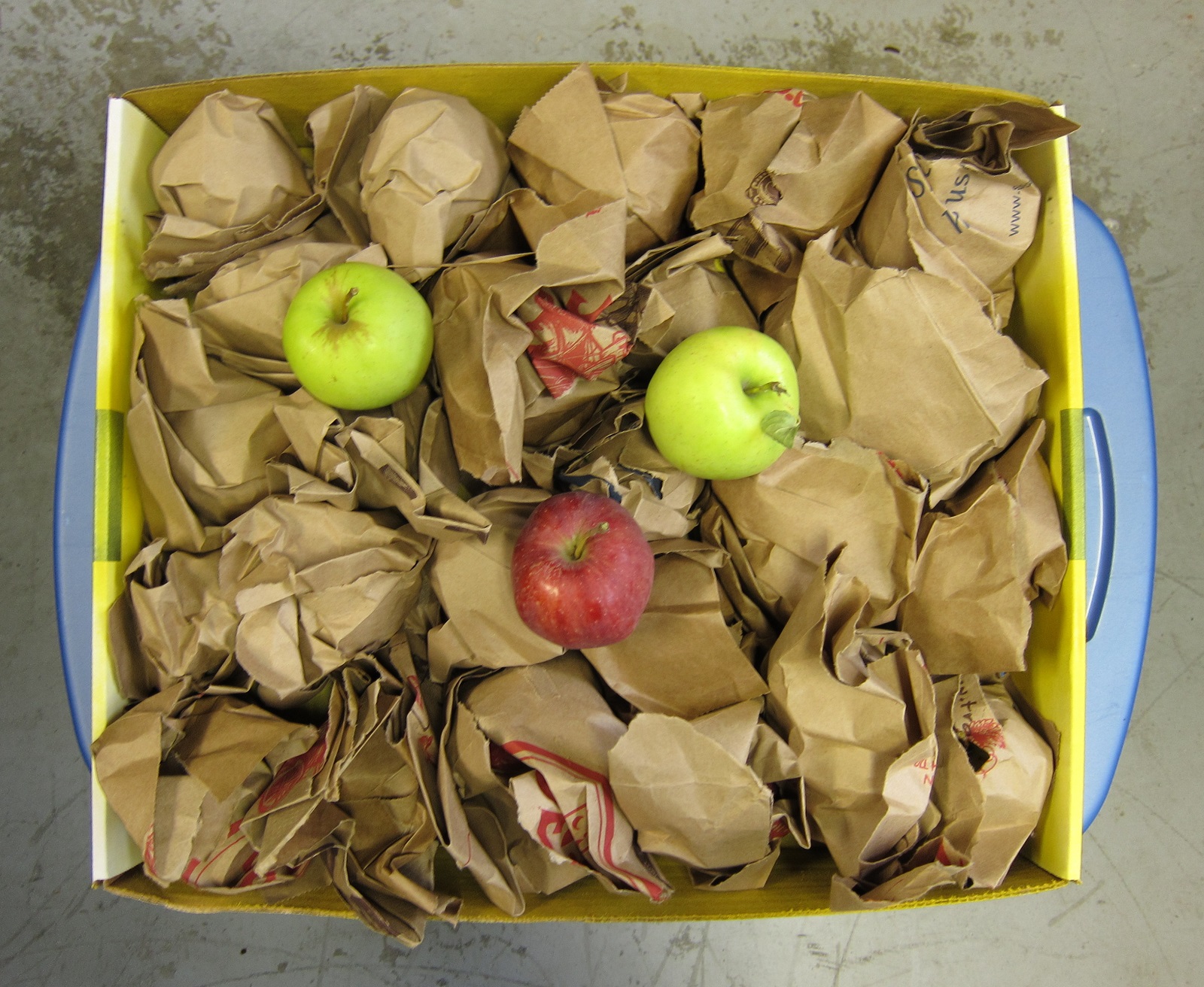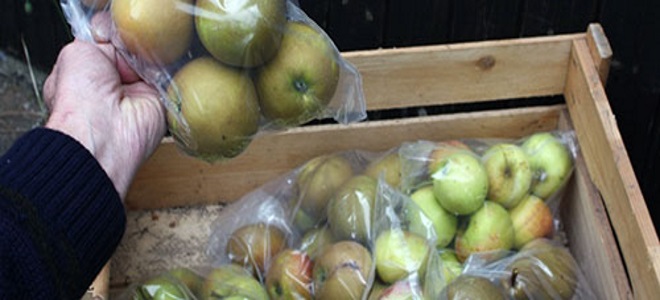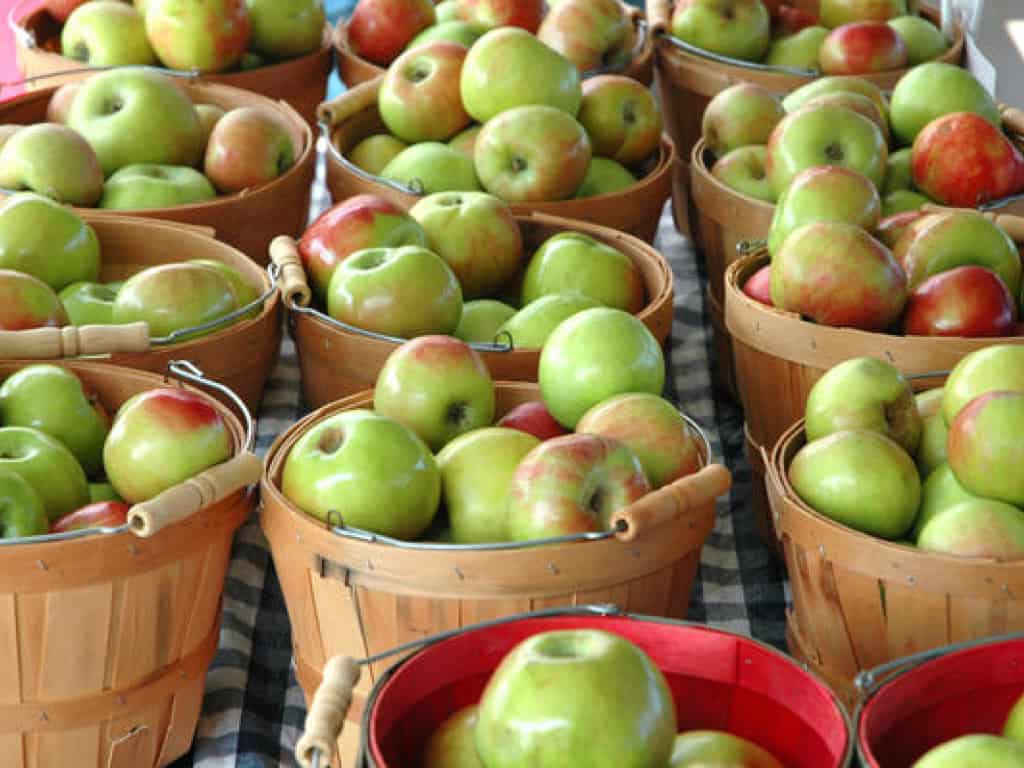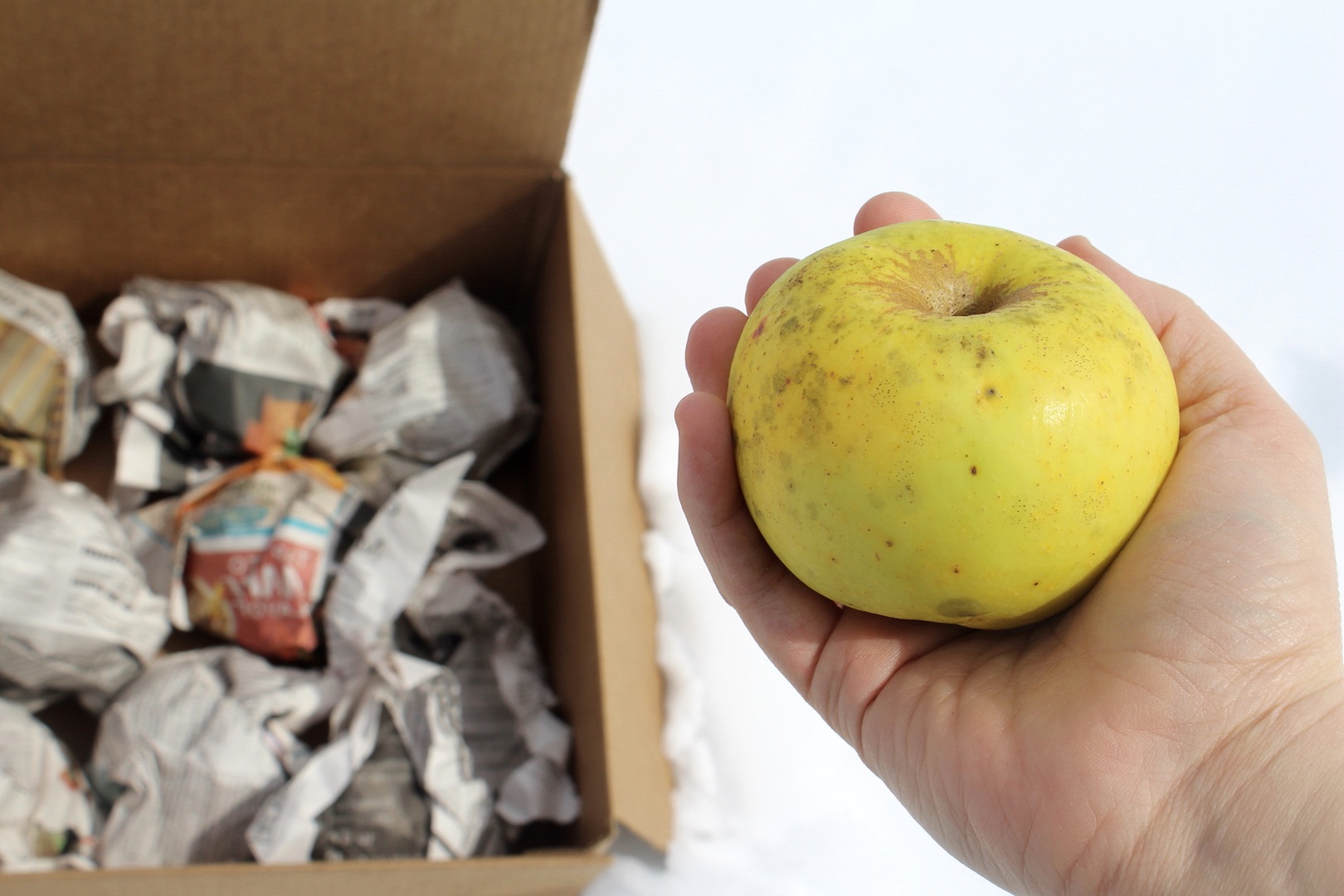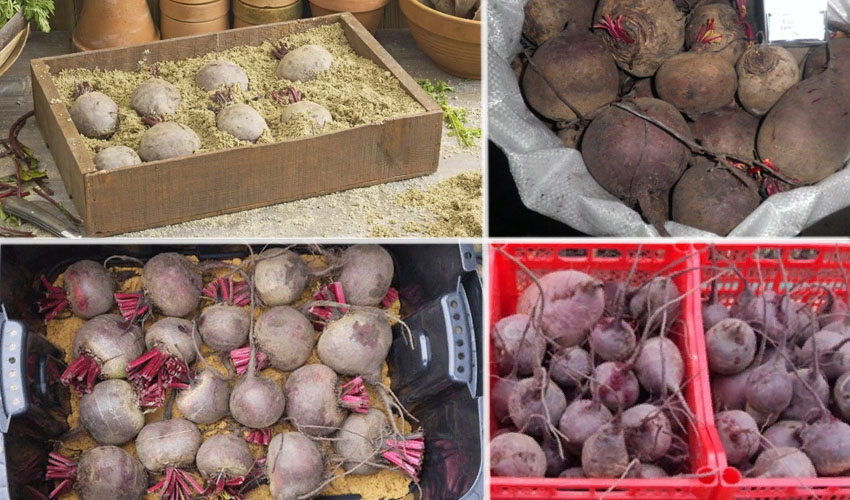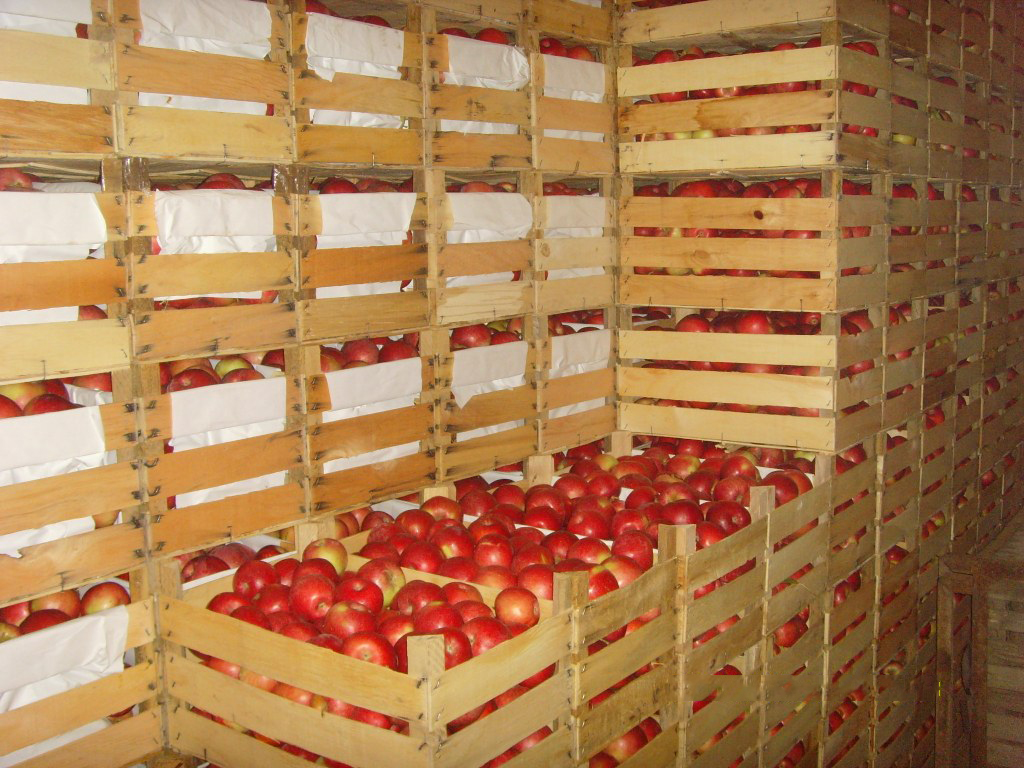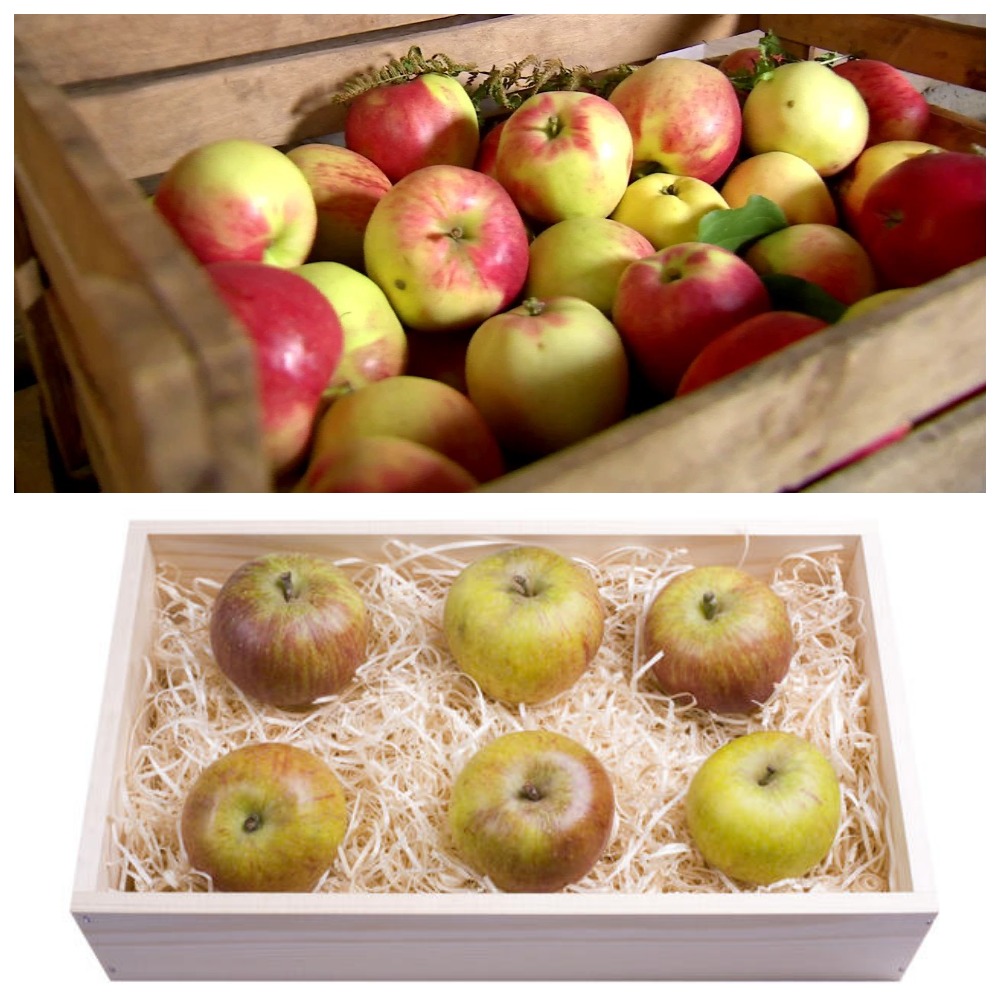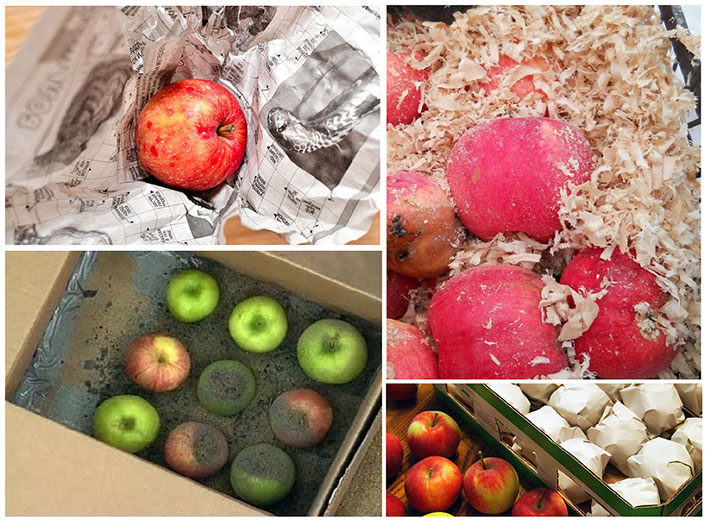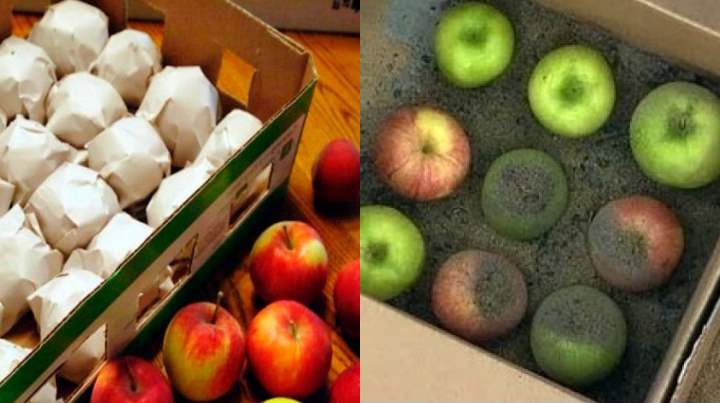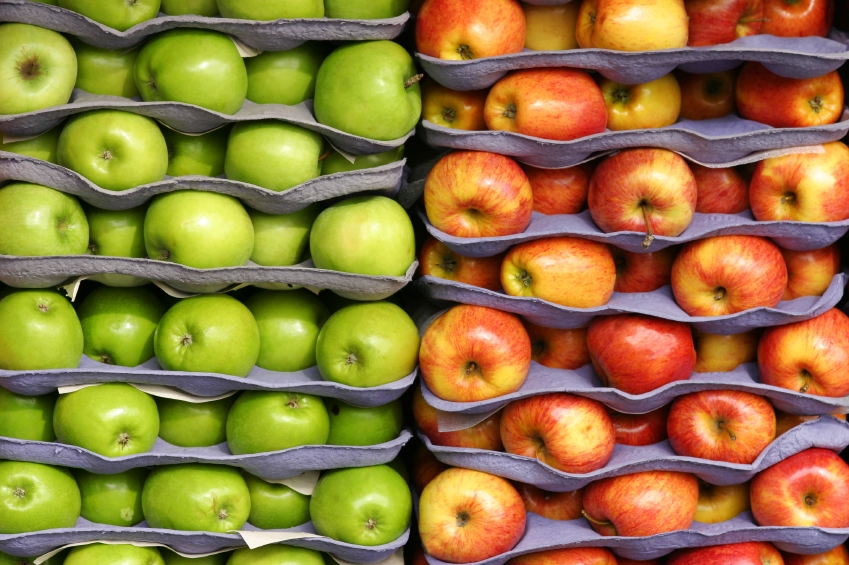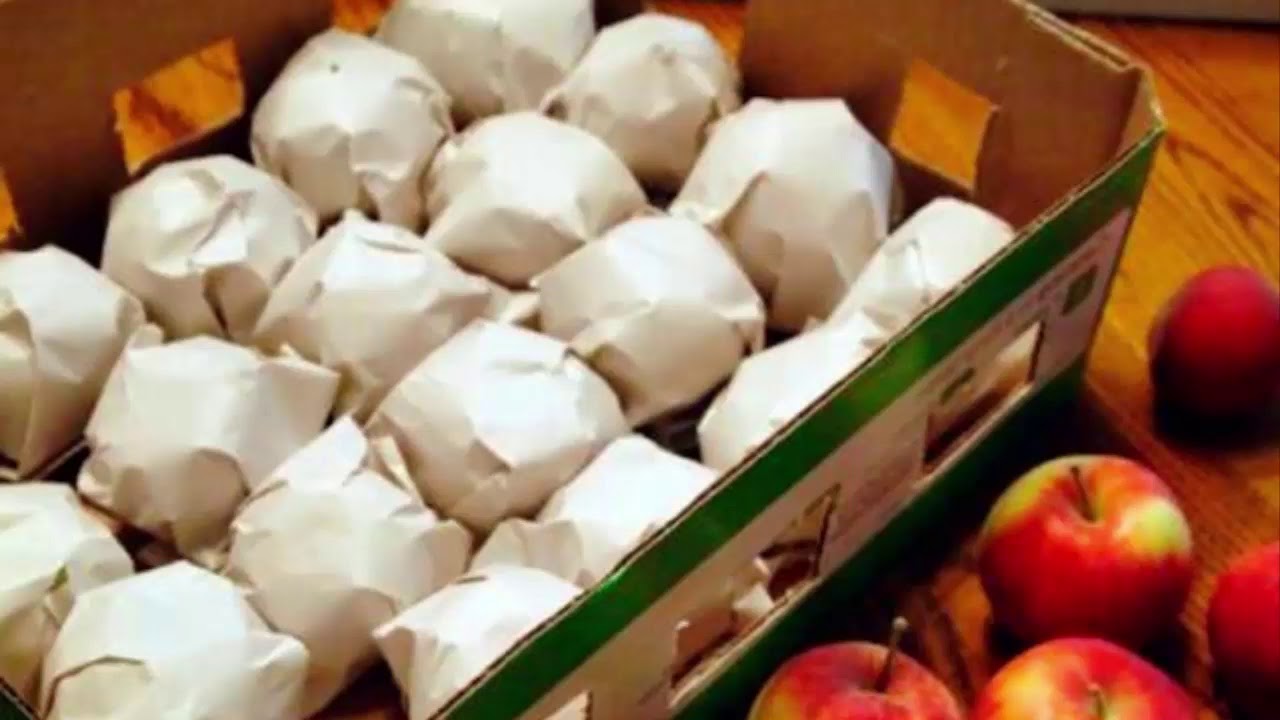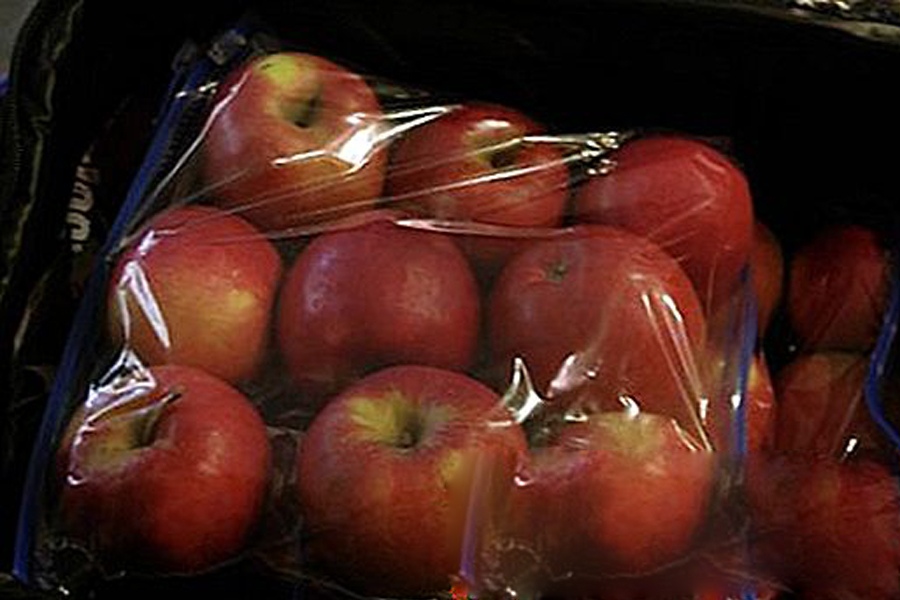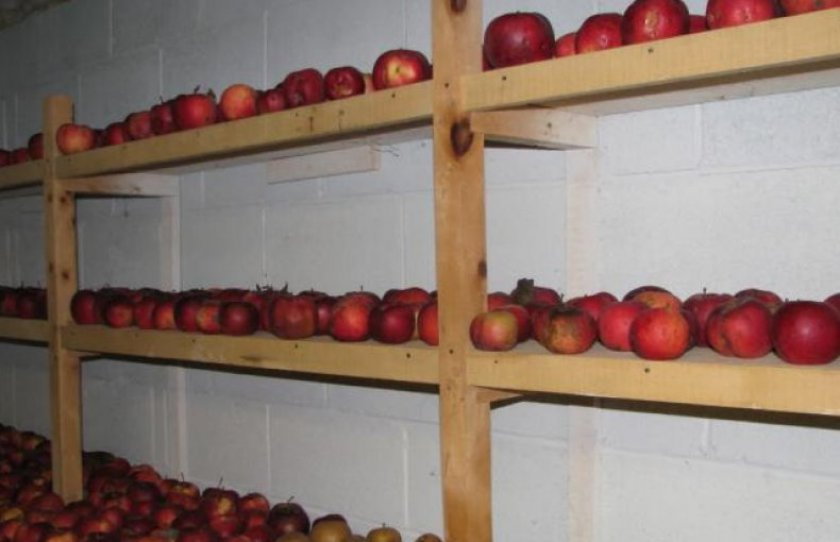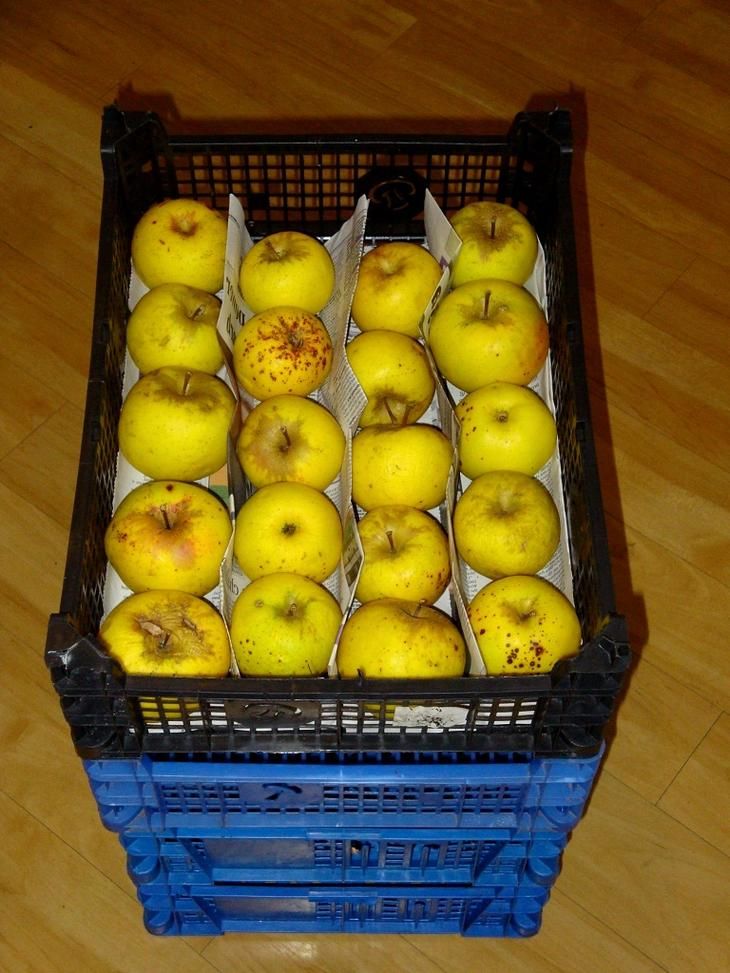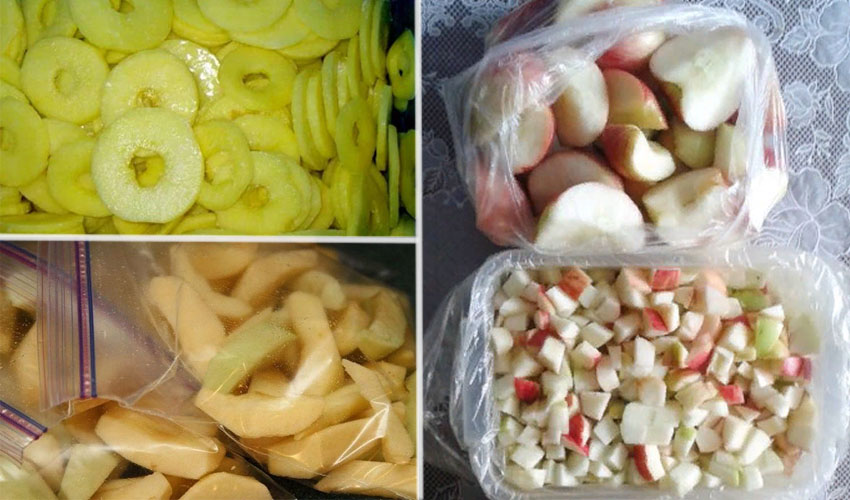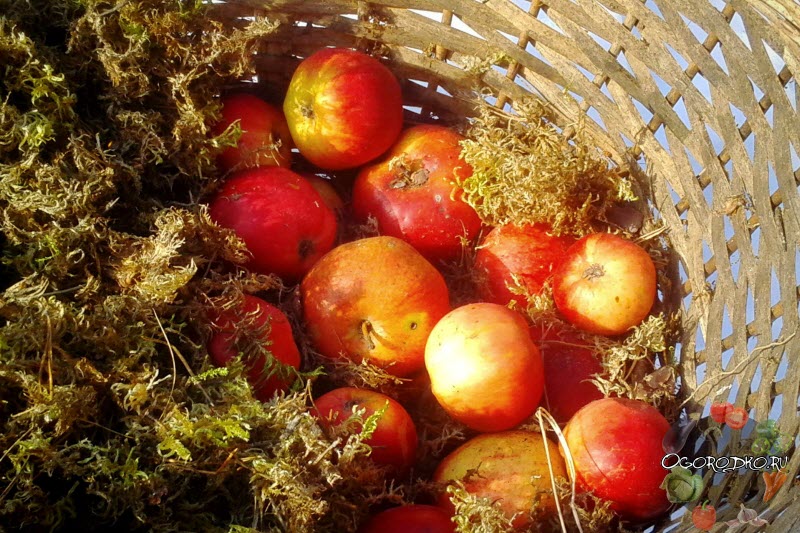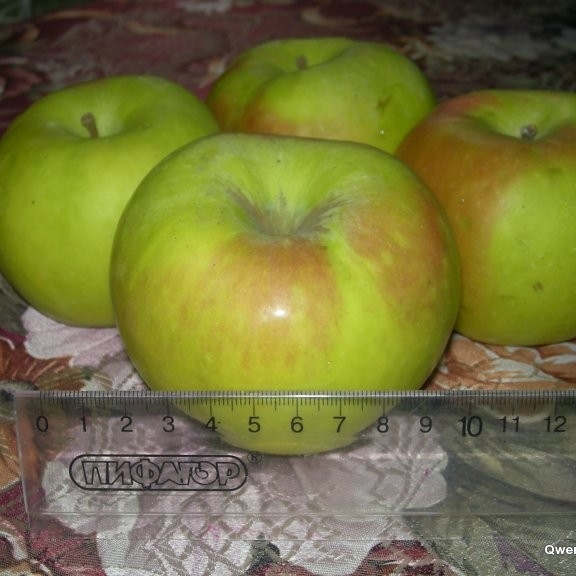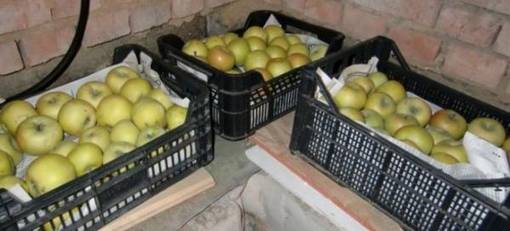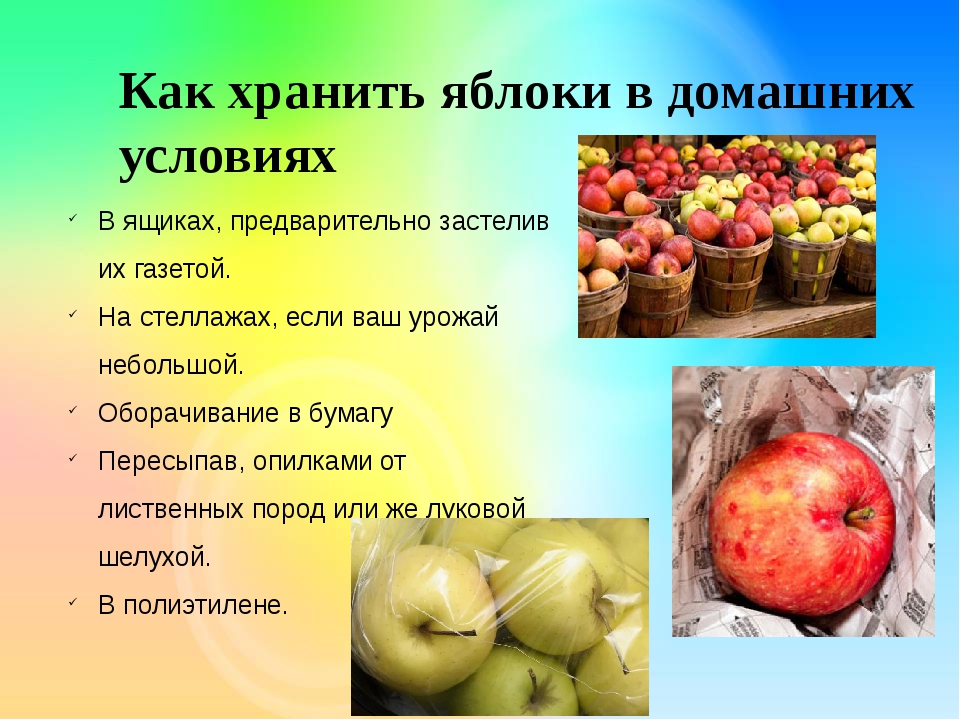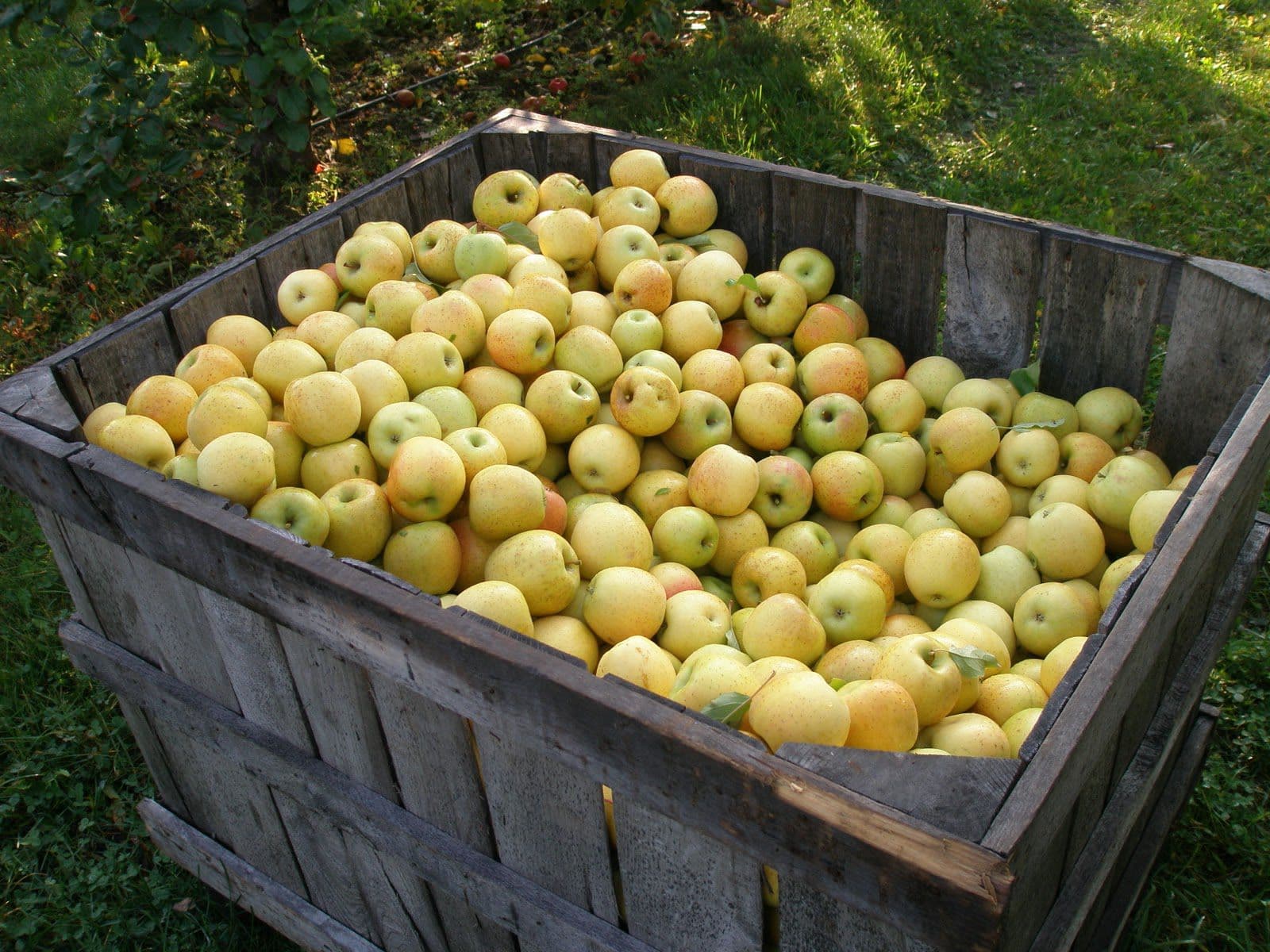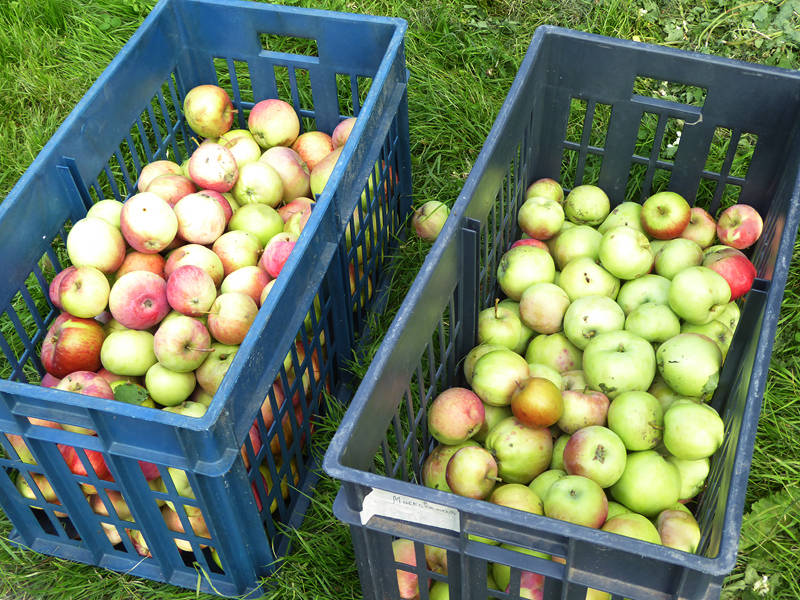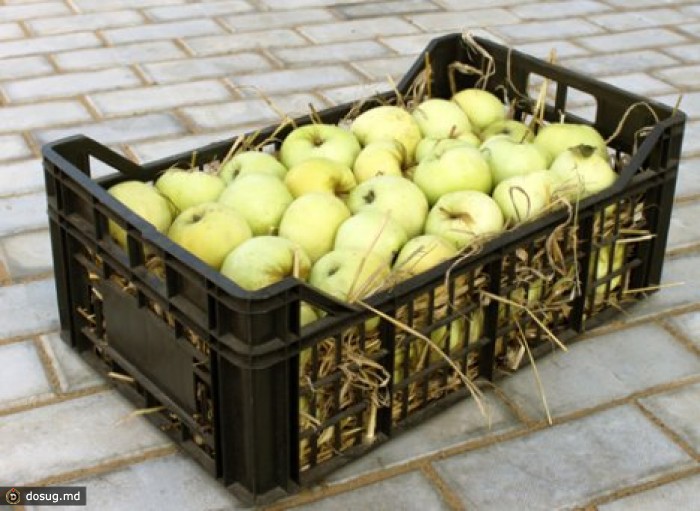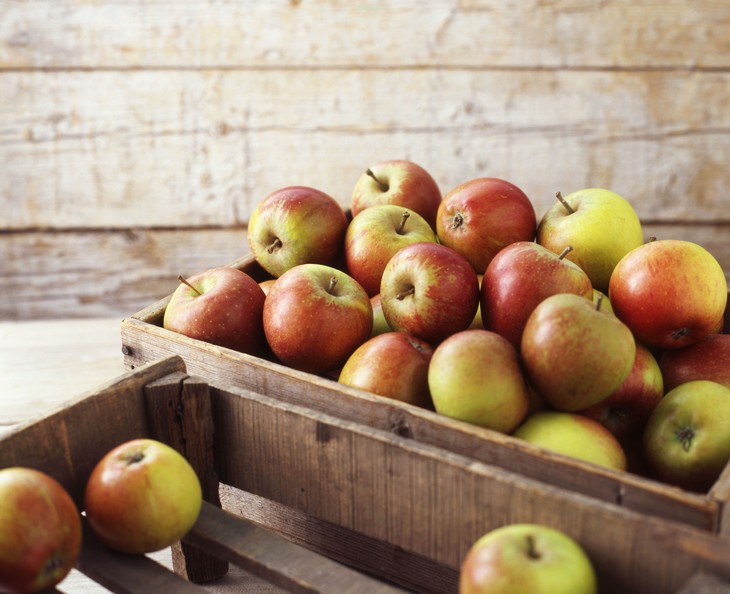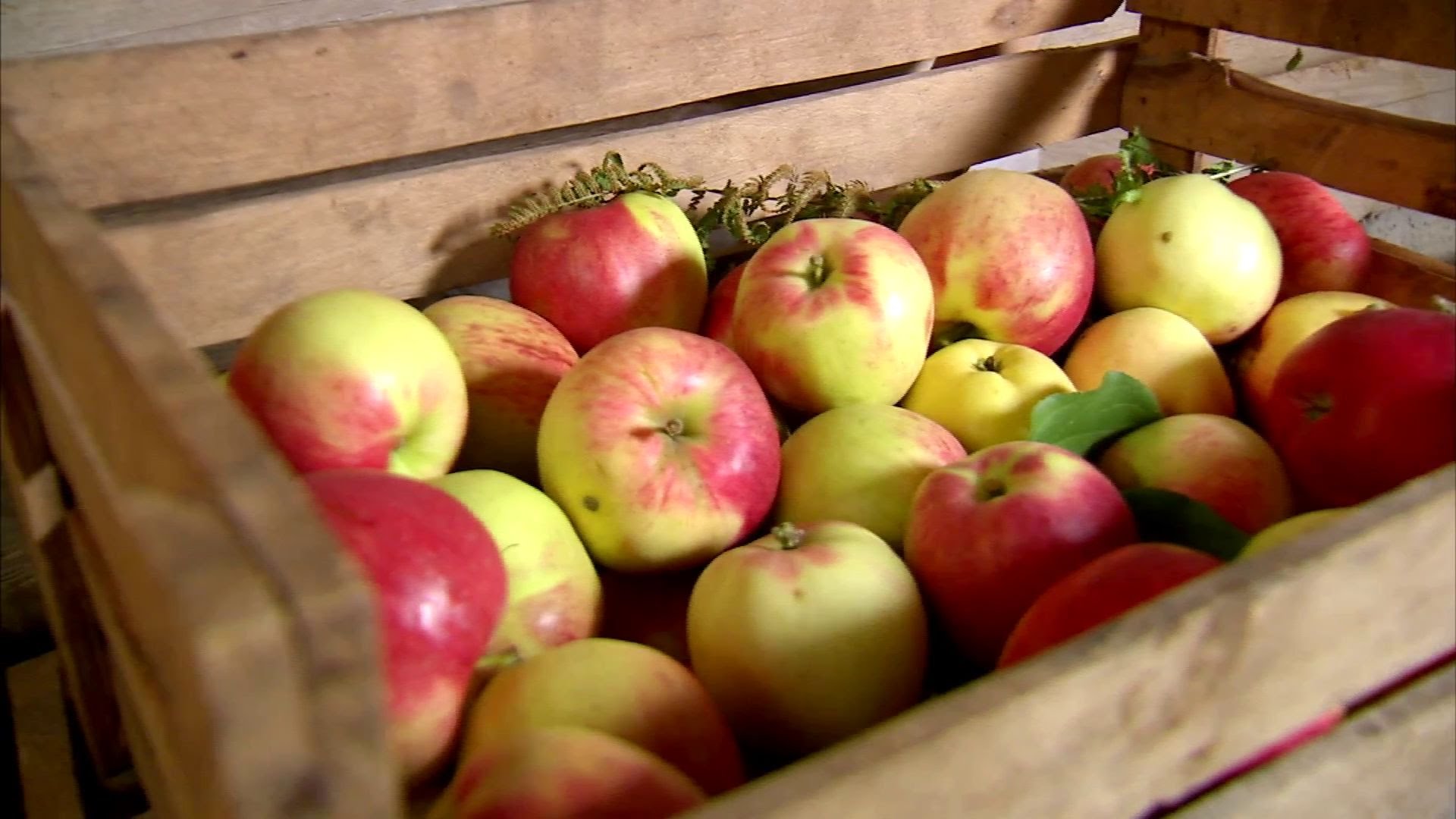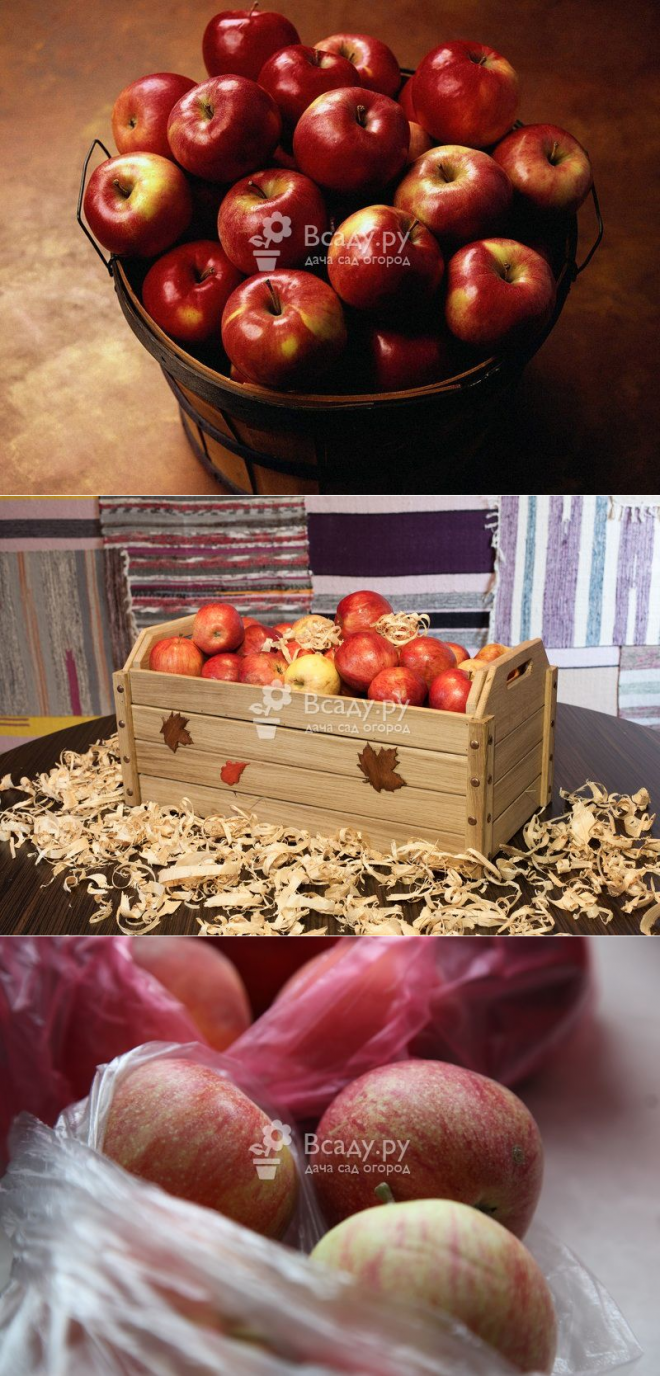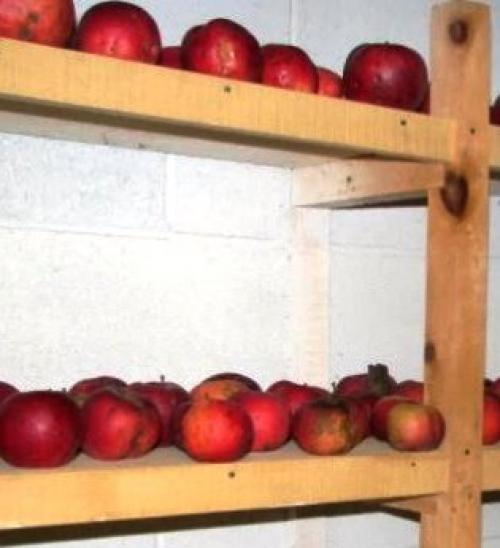How to dry properly
The choice of drying method depends both on the region of residence and on personal preference. To prepare dried fruits, fruits can be left in the sun or using electrical appliances. The first option is considered to be more successful.
Preparation
Regardless of the chosen drying method, apples must be prepared. This will require:
- wash the fruits;
- remove spoiled parts and seeds;
- cut into wedges and soak in brine.
After preparation, you can start drying.
In the sun
This option is the least labor-intensive, but suitable only for regions where warm weather lasts for a long time after harvesting. To dry the fruit, place the sliced slices on a baking sheet or wire rack and cover with cheesecloth. You can also thread the prepared fruit. Fruit should be laid out in the sun or in partial shade.
Products must be turned over every day, thereby achieving uniform drying. It will take 3-4 sunny days to get the harvested product. During this period, it is recommended to regularly check the slices under gauze to remove insects.
In the oven
To prepare apples for the winter in the oven, you will need to cut the fruits into thin slices. Next, the prepared products are laid out in an even layer on a baking sheet covered with parchment. The latter is then placed in an oven preheated to 80 degrees for 30 minutes. Then the temperature should be reduced by 10 degrees and the apples should be left for 5 hours. During this time, the fruits lose more than half of the water.
Electric dryer
This option is the simplest, since the main work is performed by an electrical appliance. To dry the fruit, you will need to lay out the slices in an even layer on pallets. Further, the apples are aged for eight hours.
In the microwave
Microwave drying is much faster. This process takes no more than five minutes. However, you can cook a small amount of dried fruit at a time. To dry the apples, you need to cut the fruits into small wedges and put them on a plate. On the microwave, set the power to 200 watts and put apples in the inner chamber for 30 seconds.
How and where to store apples at home
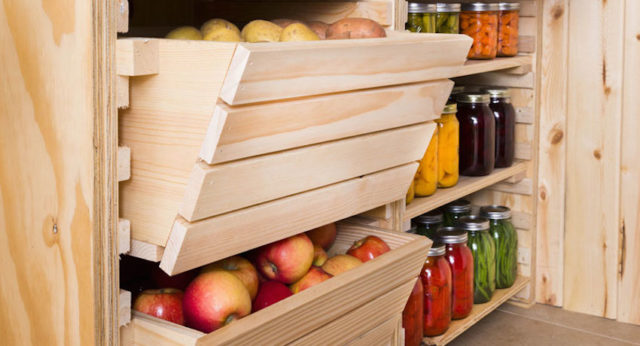
In a city apartment, fruits can be stored on a glazed balcony, on a loggia or in an unheated storage room. In private houses, apples are placed in the basement, in the attic, in the vestibule, in the dressing room or in the utility block. When choosing a room, consider the ability to maintain the recommended temperature values, as well as the level of humidity.
Fresh apples
In the case when there are few apples and long-term storage is not planned, put the fruits in a box in several layers, but not more than 3. Fruits are folded with the stalks up to avoid damage, cut the branches in half, but do not tear them off. The box can be covered with newspaper or placed in the prepared place as it is.
Another option for simple storage is to put apples (no more than 4 kilograms) in a bag, make several holes in it, tie and send to a storage location. It is advisable not to fold the bags on the floor. Regularly check the condition of fruits in boxes and bags, and immediately remove fruits with signs of rotting. If there is a lot of fruit, it is better to use other options.
Paper
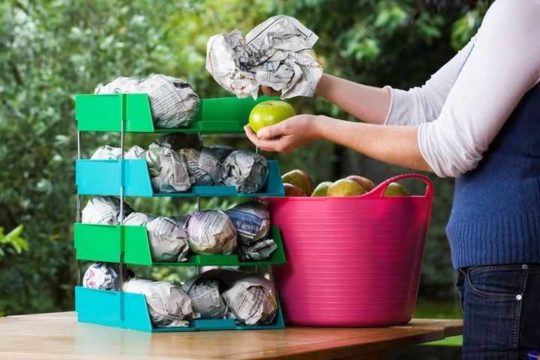
Take a regular newspaper, napkin, or other paper that is not too thick. Sheets from glossy magazines will not work; it is undesirable to use paper with colored ink. Wrap each apple completely in separate pieces of paper and lay out in several layers in boxes, while making sure that the stalks are looking up. A sheet of cardboard can be placed between the layers of apples.
It is important that the paper does not unfold.
Sawdust
Pour a small layer (up to 3 cm) of sawdust on the bottom of the container, lay the apples with the stalks on one side so that they do not touch each other, cover with sawdust, put another layer of fruit. There should be a soft pillow of at least 3 cm between each layer.
For any storage method, wooden, plastic or paper containers are suitable. Make sure that the walls of the boxes do not touch or damage the fruit. Do not place boxes too tightly, leave gaps between walls and gaps between tiers of at least 2 cm.
Canned and dry apples
Summer varieties are more suitable for drying. Rinse the fruit thoroughly under running water, remove the core, cut into 5 mm slices. Drying is suitable for any - in the fresh air, in an electric dryer or in the oven. Fold dryers in paper or cardboard boxes, do not tamp them, ensure optimal air circulation.
On the forums, you can find many recipes for canning sweet and sour apples. Whatever you choose, be sure to sterilize the jars and thoroughly clean the fruit from dirt and damage (rot, traces of pests). You can store workpieces at room temperature in any convenient place.
Long-term storage of apples in the cellar
With all the positive aspects of the above storage methods, the best preservation of fruits can be achieved in a cellar with the required humidity.
Did you know? In North America, about 2.5 thousand varieties of apple trees are grown, but only one of them - Crabapple - is a native of this continent.
Before laying the crop for storage, the fruit storage must be prepared: the walls of the cellar are whitewashed with lime, and the racks and all containers are washed with a weak solution of potassium permanganate.
For the fruits of early autumn and autumn apple trees in the basement, it is necessary to maintain the temperature from -1 ° C to 0 ° C. Late varieties are well stored at temperatures up to + 4 ° C.
Shelving storage
The racks are prepared: dried and covered with paper. After that, the apples are laid out in one layer with the stalks upwards at a minimum distance from each other, but without touching. Shelves are very diverse - with or without drawers, multi-tiered or single-tiered, located around the perimeter of the room, in the corner or in the middle.

The main condition for successful storage is ventilation, which will provide fresh air and reduce the concentration of ethylene. Also, you should not keep fruits of different cultures in the same room, especially when it comes to keeping them together with potatoes or garlic - from the first apples will acquire starchiness, and from the second - characteristic garlic notes in taste.
In plastic bags and bags
You can also store the fruits in bags or canvas bags. For this, the fruits are chosen of one size, placed in bags of 1-2 kilograms and tied. Packages are laid out on racks, stands or simply on a wooden floor.
How to store apples in the ground or sand?
Another way to store fruits in the basement is to sprinkle them with sand or earth. With a small harvest, this technique gives good results.
This is done as follows:
See also
Benefits and harms, especially the use of apple leaves
- sand (earth) is dried, sieved and calcined;
- wooden or plastic boxes are washed with soapy water or a slightly pink solution of potassium permanganate;
- up to 10 cm of sand is poured at the bottom of the container;
- apples are stacked in random order at a distance of about 1 cm from each other and from the sides;
- the first layer is covered with sand;
- the second layer is laid in the same way;
- the second tier of fruits is also covered from above.
Storage in paper
This method is even more time consuming than filling with sand, therefore it is used for especially valuable varieties or for a very small amount of fruits that you really want to save.Special plastic boxes or containers with cells for each fruit are best suited, but ordinary wooden or plastic boxes can be used as well.

Each apple is carefully wrapped in several layers of paper (for example, in paper towels) and placed in its cell with the stalk up. This storage method will allow the fetus to breathe, and the paper will absorb excess moisture, warm it and isolate it from contact with its "neighbor".
Rules for storing apples in the cellar
A cellar is the best solution for storing apples if the goal is to extend their shelf life to the maximum. However, even in the cellar, conditions must be observed so that keeping quality is good, and there are not too many rotten specimens. Here they are:
- It all starts at the stage of harvesting fresh apples. Harvesting rules dictate that the harvest must be picked with gloves, similar to grapes.
- After collection, sorting begins. It is better to select apples for the cellar by size, giving priority to samples that are not too large. After all, the larger the fruit, the more ethylene it releases.
- Before you make a bookmark in the cellar, you need to prepare the appropriate container. These can be containers or boxes in which the fruits will ripen throughout the winter.
- Housewives should be aware that after picking and sorting apples, only the strongest and healthiest samples are selected for storage. At the same time, sour varieties will live longer. For example, you can store “Antonovka” for 9-12 months, while “Spartak” or “White filling” will not live even three or four months.
- Storage is carried out in an isolated room or container.
- Once every half a month, you need to inspect apples in the cellar for damage and decay, and reject low-quality specimens.
- Before being placed underground, the room is processed - the walls are whitewashed with lime, and the shelves are disinfected.
Some people wonder if it is possible to store apples in the cellar in one place with another harvest. The gardeners answer - it is impossible to store the apple harvest in the cellar with other vegetables and fruits.
The only exception is the neighborhood with pears. The fact is that the fruits emit ethylene, which contributes not only to ripening, but also to further spoilage of the crop.
For example, potatoes stored in a cellar next to apples begin to deteriorate, sprout and rot, becoming unusable and contaminating the rest of the crop.
The paper perfectly protects against any external influences
And the apples in the cellar absorb the starch from it. So storing the apple harvest with the potatoes is fraught with both sides.
On top of that, apples absorb harsh aromas during storage. This negatively affects their taste. So with garlic, cabbage or onions, apples that are stored in a cellar will also not survive a long neighborhood.
Optimum humidity and temperature
Experienced housewives know that values from -2 to +4 degrees are considered the best temperature for storing apple harvest in the cellar. Too much cold is fraught with freezing of the fruit, and in warmth they begin to deteriorate faster. By adhering to the recommended temperature, ethylene production will be reduced.
The maximum allowable humidity in the cellar should fluctuate between 80 - 94%. And dry air will contribute to the drying out and lethargy of the apples, because of this, the apples in storage will lose their juiciness and part of their taste.
In addition to the above, the ventilation of the cellar is also important. If there is no opportunity for natural ventilation, you need to do it artificially. Well-circulating air also inhibits the production of ethylene in the crop and reduces its concentration in the basement. The penetration of groundwater into the cellar is unacceptable. Walls and ceilings must be insulated from moisture.
Storage container
It is preferable to store apples in natural containers - ventilated wooden boxes, cardboard containers, in plastic. But all of the above must be clean and strong. Here are some guidelines:
Most gardeners prefer to store it in boxes.
But it is important that the upper containers do not put too much pressure on the lower ones - therefore, it is not recommended to hammer wooden containers with apples to the brim. Otherwise, the bottom fruits will be deformed and crushed.
In addition, do not heap the apple harvest. The apples should be arranged in even diagonal rows.
The second common option is to keep the crop in a cardboard box.
But first, the box is wrapped with tape in the most vulnerable places.
As an alternative to the above, plastic boxes with holes are used.
Probably one of the most original ways to store apples ...
If the boxes have holes in the “floor”, then they need to be lined with paper or burlap.
Some gardeners prefer to store apples on the shelves of the cellar.
Storage methods and locations
There are many ways that offer different options for how and how to store apples in the cellar. Gardeners argue about the best method. Some believe that it is more convenient to place crops on racks, while others prefer boxes.
On racks
Shelving is another option for keeping apples in your cellar as long as possible. There is nothing difficult. It is enough to dry the shelves, cover them with a cloth or paper sheets. The ideal option is a shelving unit with pull-out drawers.
Apples are placed in one layer, legs up. A small distance remains between each apple.
This storage method makes it easy to figure out which instances are starting to deteriorate. At the same time, the products are well ventilated and "breathe".
In boxes
The most popular way to store apple harvest in the cellar is to use wooden crates specially designed for this purpose. The bottom of the container is lined with materials that absorb moisture - paper or natural fabric. In addition, it will provide a softer surface so that the bottom layer of the apple crop can avoid partial deformation.

In boxes, the fruits are stored along with the stalks, which serve as protection against fungi and other diseases. After each layer, paper or natural material is re-laid.
The allowed number of layers is no more than four. Experienced gardeners advise to sign each box. The date, terms and grade are recorded.
All of the above allows you to find out how long the harvest of Antonovka, Memory of Michurin and other varieties will lie in your cellar.
These bags are the perfect solution for storing anything.
In plastic bags and bags
Usually, experts do not recommend messing with containers such as plastic bags. This material does not breathe, and the food inside begins to choke and rot - especially if air is present. But if you follow the correct technology, then for apples in winter, storage in bags is quite a suitable option. You will need to take a container at the rate of one package for a couple of kilos. After packing, all the air is removed from the inside, and the blanks are placed on the shelves in the cellar.
In earth or sand
Some gardeners living outside the city in a private house are interested in how to properly store apples in sand, earth or sawdust.
When it comes to sawdust, hardwoods are used. But this material exudes an odor that fruits can absorb intensively.
Therefore, instead of sawdust, it is better to use earth or sand:
- You need to bury the apple harvest in dry soil, which is pre-sieved and disinfected by calcining.
- First, the bottom of the container is poured with sand. The layer is about 9-12 cm. Apples are evenly placed in it, at a small distance from each other.
- The first layer is poured abundantly with sand and a new layer of fruit is laid on it.
 A small instruction for working with sawdust
A small instruction for working with sawdust
The method is unlikely to be suitable for storing large volumes of crops. But for several tens of kilograms it is quite suitable.
Paper wrapping
If the apples are wrapped in paper, they will remain in the cellar until spring, or maybe until the next harvest. Paper kitchen towels come in handy for this. The procedure takes time - especially when it comes to a large harvest. After all, you need to wrap each copy separately and only then place it in containers.
What does this method give? Paper is an additional heat insulator and moisture absorber. In addition, the fruits do not touch each other with the skin, which also has a positive effect on their safety. However, you should first measure the humidity in the cellar. If it is not too high, then the paper is impregnated with any kind of odorless vegetable oil.
Storage preparation
Preparation begins indirectly well before harvest.
It consists in the correct choice of varieties for laying, caring for growing fruits, which should also pursue the goal of increasing the keeping quality of apples. After all, infection of fruits with diseases and pests will significantly reduce their safety.
You should be aware that excessive fertilization with nitrogen and potassium fertilizers can cause premature rotting of the fruit during storage.
The next stage of preparation is the correct collection. It must pass strictly within the recommended time frame.
Varieties used for long-term storage are harvested, as a rule, two weeks before they are fully ripe. From a biological point of view, the keeping quality of apples is determined by their post-harvest ripening.
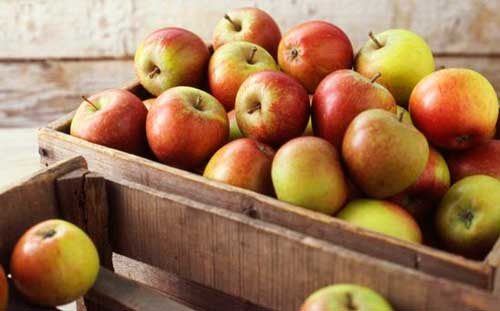
Post-harvest ripening of fruits activates respiration processes in fruit tissues, therefore ripening must necessarily take place with sufficient ventilation.
Fruit is harvested in dry weather, while the stalk is left in order to avoid drying and wilting of the apple.
After picking the apples are carefully sorted. Sick, rotten or cracked fruits should not be stored. This can cause rapid decay of the entire batch laid with a spoiled apple.
Tainted apples are left at home, in the nearest availability, and first of all eaten - they prepare compotes, use (after cleaning) for processing (jams, preserves), use them as ingredients for culinary products (charlotte, apple pies).
Severely damaged fruits are disposed of or fed to animals.
Can you save your harvest at home?
Underfloor in an apartment is a rare phenomenon even for the first floors, sheds can be seen only in old courtyards, and even then they are becoming less and less. So how do you store apples at home and is it possible? Practice shows that it is quite!
On the balcony
If the balcony is glazed and insulated, then it undoubtedly suits the role of storing some fruits and vegetables.
You can choose a method of storing apples on a loggia or balcony from any option previously proposed for the cellar. Boxes of sand or sawdust and paper wrapping are also fine.
You can independently build a thermobox from scrap materials. You will need two boxes, slightly different in size. Newspapers, rags or shavings are poured onto the bottom of the larger one. The smaller box is placed inside, and the gaps between the walls are filled with insulation: the same paper or old cloth.
If you work a little and wrap each apple in a paper napkin before putting it in the resulting container, and then cover it warmly, then in this form the fruits will be stored without problems.
In fridge
What if there is no balcony? Considering that stocks will quickly become unusable at room temperature, there is no other option but to store apples in the refrigerator. However, there is one significant drawback of this method: it is impossible to fill the entire space of the refrigerating chamber with fruit, because the rest of the products must be kept somewhere.
Thus, we have to admit that for a large harvest, a refrigerator is not an option. But a few bags of apples can be safely placed on the refrigerator shelf without oppressing other products.
In polyethylene bags
To solve the problem of how to keep apples at home, you can use clean plastic bags. Pre-chilled fruits are individually sealed and tied tightly.
It is also possible to store fruits in large plastic bags, if you put a piece of cotton wool soaked in alcohol there and tie the container tightly. Storing apples packed in this way is possible in the coolest place in the apartment: in the closet, in a niche under the kitchen window or against a cold wall.
If you make homemade low-alcohol drinks from fruits, then you will also be interested to know if you can store homemade wine in a plastic bottle.
Reliable packaging
How to store dried apples? The most suitable container for storing dried apple pieces is a sealed package.
Using it, you can provide reliable protection of products not only from moisture and various foreign odors, but also from many pests.
Insects feed on apples, so they very often make their way into loosely closed packages made of cellophane or paper. As a result, dried fruits will be spoiled by moths, bugs, flies and sugar mites, which penetrate even through an inconspicuous hole.
Dried apples are best kept in small bags made of thick fabric. In addition, cardboard boxes, tight-fitting baskets, glass jars with sealed lids, and wooden boxes that insects cannot enter are perfect for this.
It should be remembered that any selected container must first be well laid with sheets of thick paper. Waxed paper should be preferred.
From above, the fruit is also covered with a paper sheet, so that it completely covers the apples. Read about how to store dried apples so that moths do not start in them, read on our website.
Premature spoilage
How to keep apples fresh for a long time? To prolong the freshness of the fruits after harvesting, it is necessary to learn how to properly remove them from the tree, strictly observing the recommended time frame. Long-stored varieties are recommended to be harvested 1-2 weeks before full ripening. Autumn and winter varieties are most suitable for long-term storage.
It is recommended to pick fruits in dry weather, the stalk must be preserved, so the apple will not wither longer.
There is a special layer on the surface of the fruit that prevents damage to the fruit, which is not recommended to be washed.
After harvesting, the fruits are cooled, the optimum temperature is 1-5ºC, the best for this purpose is a cellar, a heated garage, a glazed loggia or balcony. Boxes or plastic bags can be used as containers.
Packing in newspaper or wrapping paper will help protect the fruit from premature spoilage.
The following factors can cause premature spoilage of apples:
- overdose of nitrogen or potash fertilizers;
- calcium deficiency in apples;
- getting infected fruits into a container with healthy ones;
- prolonged rains;
- warm storage.
You will learn how to properly prepare apples for storage in this video:
When to harvest apples?
But not only the storage duration of apples depends not only on the correct choice of the variety, but also on how you harvest the crop, how you feel about the fruit itself, this is very important. If you have a picker, then it must be clean, have even, smooth edges, and you must be able to use it.
In addition, storage containers (wooden boxes, baskets, etc.) must be clean.
By the way, you know that you can only pick apples in plastic buckets, preferably made of soft plastic, with a capacity of no more than ten kilograms and use rubber gloves for collection.
In addition, it is important to know whether the apples are ready for harvest, and somewhat less important if they are not ripe. But if they are overripe, then, alas, they will not be stored.
Finding out the degree of maturity of apples
Let's start by figuring out the maturity of an apple. This is often very simple. You walk through the garden and see that the apple tree has dropped one or two apples. Of course, this can be a simple disposal of the moth, but if the apple is clean and without signs of damage, then it is highly likely that it is time to harvest.
If you do not trust the apple tree, assess the degree of maturity yourself, there are elementary tricks for this - pick the apple and press the pad of your finger on its surface. A dent is formed, if it disappears immediately, then it is too early to harvest. If the skin cracked when pressed, then the apples are already overripe and the crop must be harvested urgently, otherwise there can be no question of storage. In the event that the skin bends and is only slightly leveled, then it's time to pick the apples - most likely they are ripe.
Well, of course, you should pay attention to the typical color, apple mass, the appearance of a characteristic aroma, timing. And if you do not believe either one or the other method, then turn to science
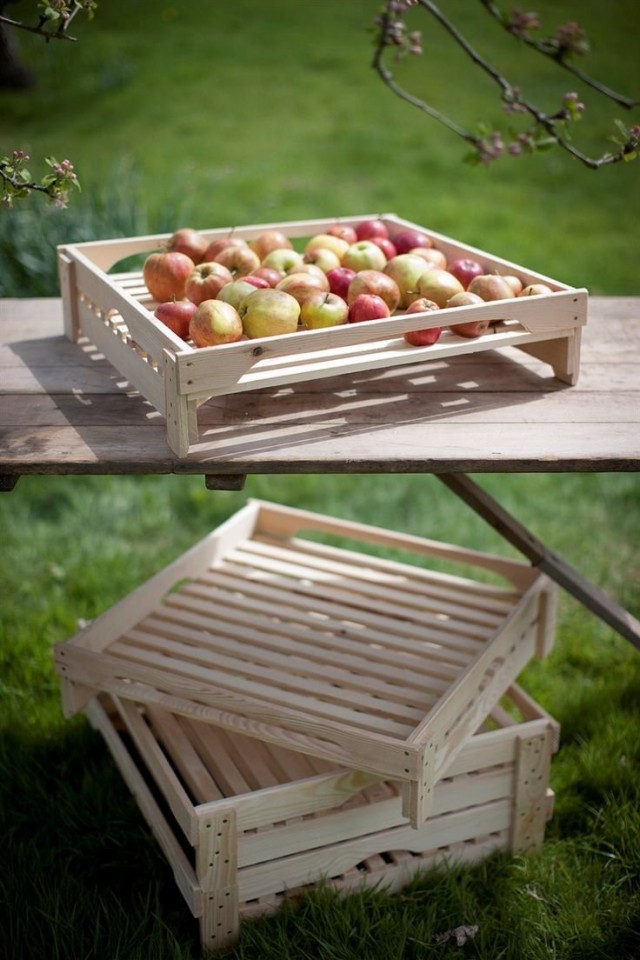 Sorting harvested apples before storage
Sorting harvested apples before storage
The scientific method for determining the ripeness of an apple
In fact, few people know about the existence of such a method, but it is. In order to determine whether the fruit is exactly ripe, it is necessary to take a liter of distilled water and dissolve three grams of potassium iodide and one gram of iodine in it. Next, you should take an apple and cut it lengthwise, and then dip it into the solution.
It will be possible to understand whether the apple is ripe by the color of the edges and middle of the apple: if a blue color appears in these places, it means that it shows an excess of starch and it is early to harvest, if the color gives off blue, and in the middle the apple is generally yellow, then this is the ideal degree of maturity and it is necessary to start harvesting. In the event that both the center and the edges are yellow, it means that the apple is already overripe and it is better to send it for fresh consumption or processing, it will most likely no longer be stored.
Gardeners, who have years of gardening behind them, try to harvest a little unripe, unless, of course, it is intended for storage, and not for sale immediately after harvest.
Methods for storing apples in an apartment
You can store fruits in an apartment in a variety of containers, in a place where the appropriate conditions are created.
Storage in boxes
Quite convenient containers are wooden boxes, cardboard or plywood boxes. Wooden boxes will reliably keep the fruits from external physical influences and will significantly save space when they are installed on top of each other on several floors.
Cardboard boxes are short-lived and susceptible to moisture - with high humidity, apples cannot be stored in them for a long time. To protect against mechanical stress, the fruits can be isolated from each other and from the walls of the container by wrapping them in a layer of wrapping paper or placing them in hardwood sawdust.
 You need to lay fruits in neat rows, with the stalks up or slightly to the side. It is advisable to arrange the fruits in each "layer" in a checkerboard pattern so that the apples of the upper order do not damage the stalks of the lower one.
You need to lay fruits in neat rows, with the stalks up or slightly to the side. It is advisable to arrange the fruits in each "layer" in a checkerboard pattern so that the apples of the upper order do not damage the stalks of the lower one.
However, this is not always convenient, and with a large amount of harvest, it is also extremely time consuming. The boxes can be labeled with the name of the variety and the date of installation. Thus, it will be easy to determine which fruits should be eaten or sent for processing earlier, and which ones have not expired yet.
In heat chambers
Modern technologies offer such a solution for storing vegetables and fruits as thermal chambers. On an industrial scale, these devices have been used for more than a year, but for home conditions they began to be produced quite recently.
Cameras allow you to set all storage conditions in accordance with GOST, while in different compartments you can create a certain microclimate by setting the time interval - how long it will last.

You can control the operation of the unit (what to set the temperature, humidity, airflow, etc.) remotely from a mobile device or a remote computer. Such a camera is expensive and is suitable for those who have conditions for its placement and maintenance in a private house.
Features of storage in the refrigerator
Storage in the refrigerator, in addition to the need to comply with the temperature regime, as mentioned above, has some nuances that must be taken into account. Ripe large fruits emit large amounts of ethylene gas.
It helps speed up the ripening of other fruits and vegetables that are stored nearby, which can lead to premature spoilage. Therefore, a certain container or shelf must be allocated only for apples, insulating it from neighboring shelves (for example, simply covering it with thick paper).
Important! The fruits are stored in the refrigerator on the day of harvest or the next day. If they were purchased at a retail outlet, then they need to be stored immediately after purchase, because they could have been plucked from the tree for a long time .. If the total temperature in the refrigerator is above + 5 ° C (and this usually happens), then the period the safety of apples will decrease
They need to be inspected regularly, removing those that have begun to wither and dry out. If the temperature drops below zero, even for a short period of time, the pulp may freeze locally. This freezing will give rise to putrefactive processes.
If the total temperature in the refrigerator is higher than + 5 ° С (and this usually happens), then the shelf life of apples will decrease. They need to be inspected regularly, removing those that have begun to wither and dry out. A drop in temperature below zero, even for a short period of time, can cause the pulp to freeze locally. This freezing will give rise to putrefactive processes.
Balcony storage
The content of the harvest on the balcony or loggia has both pros and cons. Of the advantages, one can single out - compact storage, when the boxes are in a small pile in the corner.

- The downside is control over unstable temperature and the need to perform the following operations:
- cover containers with fruits when they freeze;
- ventilate (in order to anticipate the state of waterlogging);
- regularly inspect and sort apples, followed by rejection of frozen or spoiled ones.
Balcony storage is convenient for the availability of fruits and control of their quality. But the balcony must be glazed and insulated, and the presence of controlled heating would be ideal.
The variety decides the success of the business
We'll start by choosing a variety. No, we will not give long and tedious descriptions of varieties, we will say as briefly as possible which types of apple varieties will last longer, and which, no matter how hard you try, will either become loose and wadded, or will start to rot after a week of storage.
For some, we may open a secret if we say that all varieties of apples are divided into categories according to keeping quality. So, when choosing a seedling, you need to find out to which keeping category this or that specimen belongs (of course, if you need the fruit to lie for as long as possible). Usually, the highest keeping quality is observed in the late, so-called winter ripening varieties, in which the harvest begins to be harvested almost the very last (in central Russia, this is mid-October). There is no need to describe apple varieties, just look in the State Register and find winter varieties in the list.
Extending shelf life
In an apartment, apples can lie until winter. What needs to be done so that this period is as long as possible:
Choose good apples without any signs of spoilage. Otherwise, one thing can ruin everything. This is due to the release of ethylene during the decomposition of the fruit.
Put damaged fruits in a separate container, they can be eaten first.
Transfer selected fruits to the refrigerator, preferably in the compartment for fruits and vegetables.
Cover them with a damp towel for extra maturation time
It is important to remember, however, that moisture and sealed containers are incompatible. Store the fruit as it is in an open container.
If the refrigerator has a temperature regulator, then set the mode from -1.1 to +1.7
Failure to comply will lead to rapid damage.
Check the fruit from time to time to remove any spoiled ones.
In order for the fruit to remain fresh throughout the winter, you need to know the nuances of storage, the step-by-step process looks like this:
- Opt for thick-skinned varieties as sweet varieties with thinner skin have a shorter shelf life.
- Select undamaged fruit.
- Wrap each fruit with wrapping paper or newspaper. This is necessary for isolation, since they release ethylene, and when rubbing against each other, the process of decay is accelerated. Therefore, wrapping will reduce potential damage.
- Take a cardboard box or wooden box, there should be good air circulation in them. A closed lid will provide an optimal level of air temperature.
- Place the fruit wrapped in paper to keep it from unfolding.
- The room can serve as an insulated loggia, an unheated basement, an attic or a storage room. Fruit should not be stored in warm rooms to avoid quick spoilage.
- Look into each box after two months, sort out the fruits, removing the rotten ones. Quality control will keep the fruit fresh for several months.
Apples are stored at temperatures from 0 to 8 degrees, summer varieties are up to 2 months, winter varieties can last until spring.
So, the best place for storing fruits is a cellar, attic, underground, balcony or refrigerator. Each fruit is wrapped in paper and placed in a wooden box or rack. If there is no possibility of keeping apples fresh for the winter, then you can use drying, freezing or drying, which also will not in any way reduce the benefits of the fruit.
Harvesting
There are varieties that are harvested at the beginning of ripening and varieties that are harvested after ripening. The first include: Melba, Anthea, Banana, Mantet, Belorusskoe raspberry, White filling. The following varieties are harvested when they are mature: Antonovka ordinary, Boyken, Kastela. Early fruit should be plucked gradually.
How to keep apples longer? Preservation of the natural wax coating is one of the important conditions for collection. For harvesting, you need to choose dry, not rainy days. You need to start collecting from the lower tier of the tree. Without touching the fruits themselves, they must be removed with "twisting" movements, keeping the stalk.
Sorting and sizing are important prerequisites for good preservation. Each variety has its own storage characteristics, so you should put sorted fruits in different boxes. You can stick papers with the name of the variety on the boxes.
The larger the fruit, the more ethylene it releases, thereby accelerating the ripening and spoilage of small fruits, therefore the calibrated apples are also laid out in different containers according to the size.
The fruits should also be sorted by quality. Set aside damaged, wormy, wrinkled or spoiled apples. How to store apples in winter? Cover the boxes with paper, place the sorted and calibrated apples with the stalks down to avoid scratches and damage. After collecting and placing in a container, let the fruit cool for 12-24 hours.
Then you can bring them into a pre-prepared room. The boxes can be placed in plastic bags. Polyethylene does not allow moisture to pass through, almost does not allow oxygen to pass through, it passes carbon dioxide well, thus, the fruits do not lose weight for a long time.
Apples do not tolerate storage together with other fruits or vegetables: potatoes, onions, carrots, etc. From this, apples deteriorate faster, acquire a starchy taste, and potatoes germinate from an excess of moisture.
Where is the best place to store apples? If there is no basement, the following way of storing apples will work. Place the sorted fruits in 1.5 kg plastic bags.Dig a trench or hole to a frost-free depth. Usually it is about 50 cm. Packages with fruit should be put in a hole, covered with earth, and marked. Cover with twigs and leaves. According to reviews, in this way the fruits are preserved very well.
In a city apartment, where there is neither a basement nor a small plot of land, there is the following method. You need to fill a plastic bag with apples to the middle, tie it tightly and cut a hole 10 cm in diameter in the middle of the bag. You can store it in an apartment, in a warm garage, on a balcony or in a closet.

